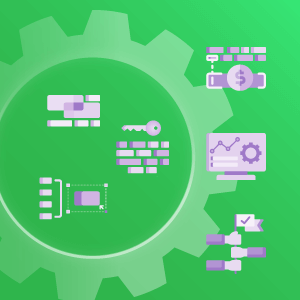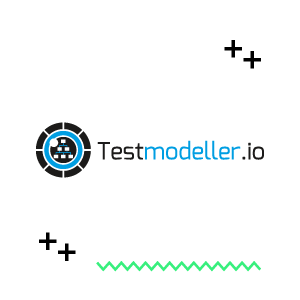If you’re an organization undergoing a digital transformation, ensure you’re staying competitive with these future-driven approaches to QA and software testing.
During 2019, we saw many advancements in software testing. The transformation from Quality Assurance to Quality Engineering took over. BDD bridged the gap between business and the technical teams allowing collaboration to thrive. Testers across the globe felt the importance of Artificial Intelligence tools to reduce the test automation cycle time.
Now it’s time to look at the future. How are software testing and quality assurance evolving? Here are 5 software testing trends to adopt and stay competitive in this ever-evolving market.
1. QAOps / DevTestOps
In 2020, many DevOps organizations will continue to adopt DevTestOps because of the proven benefits of collaboration between testers and development.
DevTestOps trended in 2019 and will continue to 2020. In DevTestOps, Quality Assurance and Operations teams collaborate and work together to deliver a quality product. DevTestOps aims to improve software quality and deliver highly stable applications. This can be achieved by adopting the right kind of test automation strategies.
The components of a DevTestOps framework have to be defined very well so that it runs tests that are productive. The tests should be executed fast and in parallel to ensure there are no unclear results.
2. Exploratory Testing
Many organizations are already adopting Exploratory Testing in order to diversify their testing strategy and discover more unexpected discrepancies to their code and product.
Exploratory Testing does not predefine test cases, instead they are done intuitively while testing. With this approach, testers have a predefined goal, set a time limit, and dynamically explore the application in search of bugs and code discrepancies.
You’ll find Exploratory Testing most useful when there is little requirements documentation. You’ll also be able to explore new testing scenarios which do not come up while initially drafting tests. The major challenge with this kind of approach is that testers should have good domain knowledge.
3. Artificial Intelligence/Machine Learning
Approaches to AI/ML vary from Visual Testing to self-healing frameworks. Visual testing helps testers write fewer tests for UI and covers functional testing when used properly. On the other hand, self-healing AI heals issues in test scripts, minimizing the maintenance and cost of creating automated tests.
Artificial Intelligence and Machine Learning continue to gain speed in 2020 as new tools emerge and evolve. Companies who incorporate AI/ML into their test management will see improvements in the way testers do their work because there is a continuous feedback loop.
4. Codeless Automation
The traditional way of writing automated tests consumes time and requires coding skills. As a solution, codeless automation tools like IDE’s (integrated development environment) consolidate the tools required to write and test software, and essentially write the tests for you. Recently, IDE tools like Selenium IDE and Katalon Recorder have advanced new features like self-diagnosing locators, advanced plugin integration, data-driven ability, and conditional steps. Using these functions, testers can write automated tests logically without having coding knowledge.
Business testers will be the main users of these tools as they have less technical skills and the tools allow them to write automated tests logically without having to code. Even more, IDE’s now have the ability to plug into the CI/CD pipeline, making them DevOps friendly.
5. Risk Compliance and Cyber Security
End users want to know that the products they’re using are highly stable and secure against data breach and theft, so risk compliance and cyber security are top priorities for all companies. With security testing, vendors can gain the trust of end users ensuring their data is protected.
The Banking and Insurance Sectors prioritize security testing to avoid threats like ransomware and other attacks.
Increasingly, development teams perform a shift-left approach for security and use security tools to check for vulnerabilities in the code during deployments through pipelines. They also check whether the programming language standards are followed, ensuring maximum security against attacks.
Ensure maximum ROI for your QA costs
2020 predicts that software testing will continue to evolve in order to maximize efforts and reduce the costs of testing. How do you stay up to speed?
Adopt a culture of QAOps to increase collaboration. Try Artificial Intelligence, Machine Learning and Codeless Automation tools to optimize your resources. Give enough time for testers to perform Exploratory Testing and test the application from the domain level. Finally, incorporate more Cyber Security Testing to build trust among your customers and protect your brand from exploits and breaches.
How is your organization approaching QA and Software Testing in 2020? Let us know in the comments below.
Author Bio
Giridhar Rajkumar has 10+ years of experience in the IT industry. He’s worked with multiple customers in the UK, EU, India and Latin America for successful transformations in Test Automation & DevOps. He is an author, speaker and successful Instructor in Test Automation and DevOps concepts.






That’s a fabulous blog to discover the emerging trends in software testing and quality assurance. Of course, you’re 100% correct – the concept of QAOps has promptly gained its way to the industry. It has been implemented by large tech companies as well as medium and small organizations to address resolute problems. QAOps has been cropping up, and I guess it will shift into a fully-fledged action by 2021.
Thanks for sharing your insights Roberto! Does your organization adopt a QAOps approach?
Great post.
Thanks William! Do you think these trends will continue into 2021?
Best regards,
Team Xray
Is DevTestOps, QAOps same?
Hi Kumar,
Great question – yes DevTestOps and QAOps are essentially the same concept which is about bringing developers, testers and operations engineers together by incorporating continuous testing with a DevOps approach.
Hope this answers your question!
Nice Giridhar Rajkumar, I really appreciate the effort you made to share this knowledge, Thanks for the valuable article. I also went through another article, which is about ‘Top 7 Software Testing Trends to look out for in 2021’ . I’ll attach the link here for reference – https://softwaretestingboard.com/blogs/top-7-software-testing-trends-to-look-out-for-in-2021/#axzz6ejKCMnzk
Hi Steve! Thanks for sharing. We will also have an article about our predictions for trends in 2021. Stay tuned!
This blog helps you to know about the top 5 software testing trends of 2020. These are must read for all. This article is a good one to look at. You will get best review over here and would suggest others too. Great blog indeed, will visit again future to read more!!
Very Nice, Really enjoy article and love to visit again and again. This is the perfect list of software testing trends which are going to boost in the upcoming year also…
Keep sharing such useful information…
I also love to share my article with you, hope you like it: https://www.testrigtechnologies.com/top-test-automation-trends-to-consider-in-2020/
These are some great idea about top 5 software testing trends of 2020 that you have discussed here. I really loved it and thank you very much for sharing this with us. You have a great visualization and you have really presented this content in a really good manner.